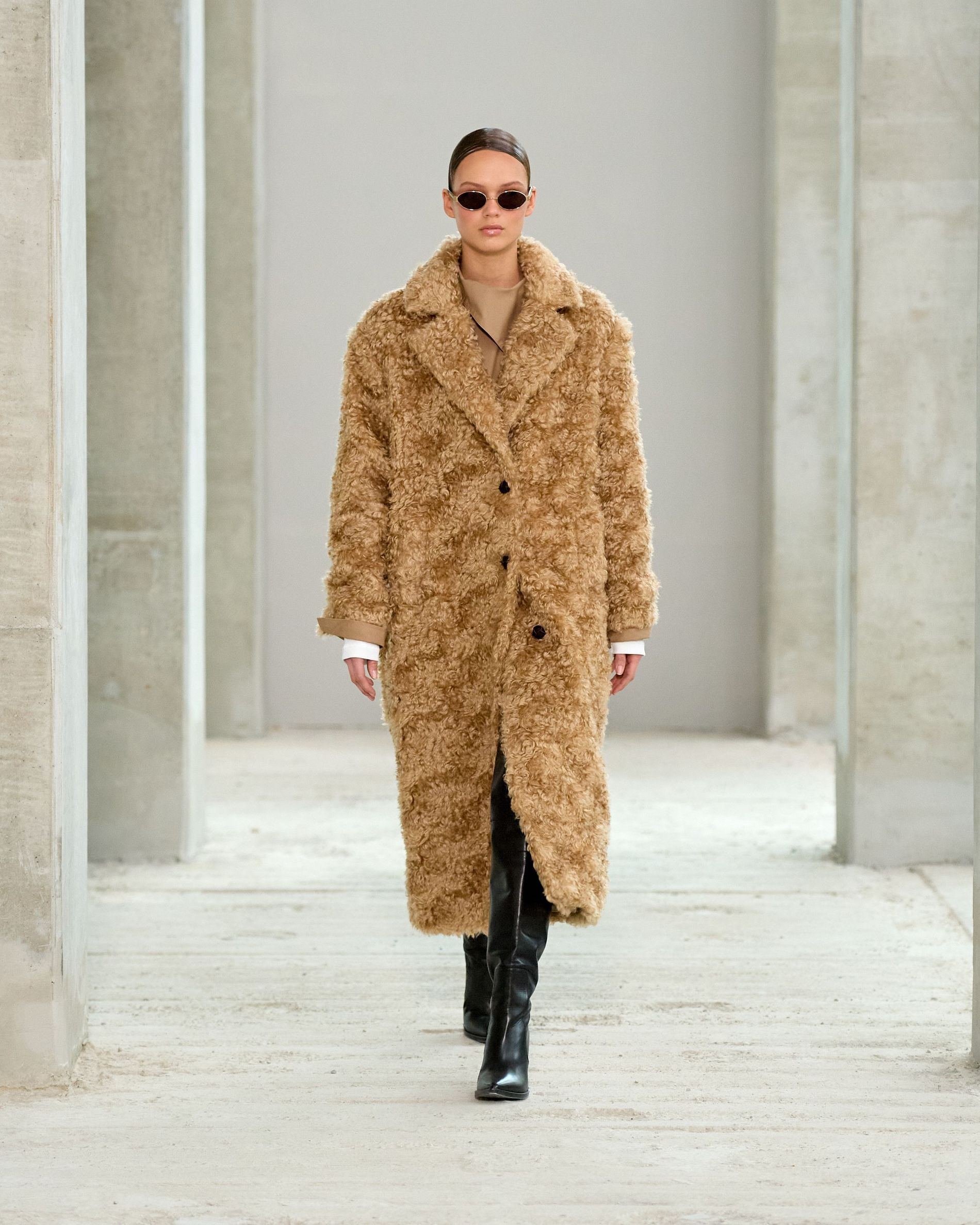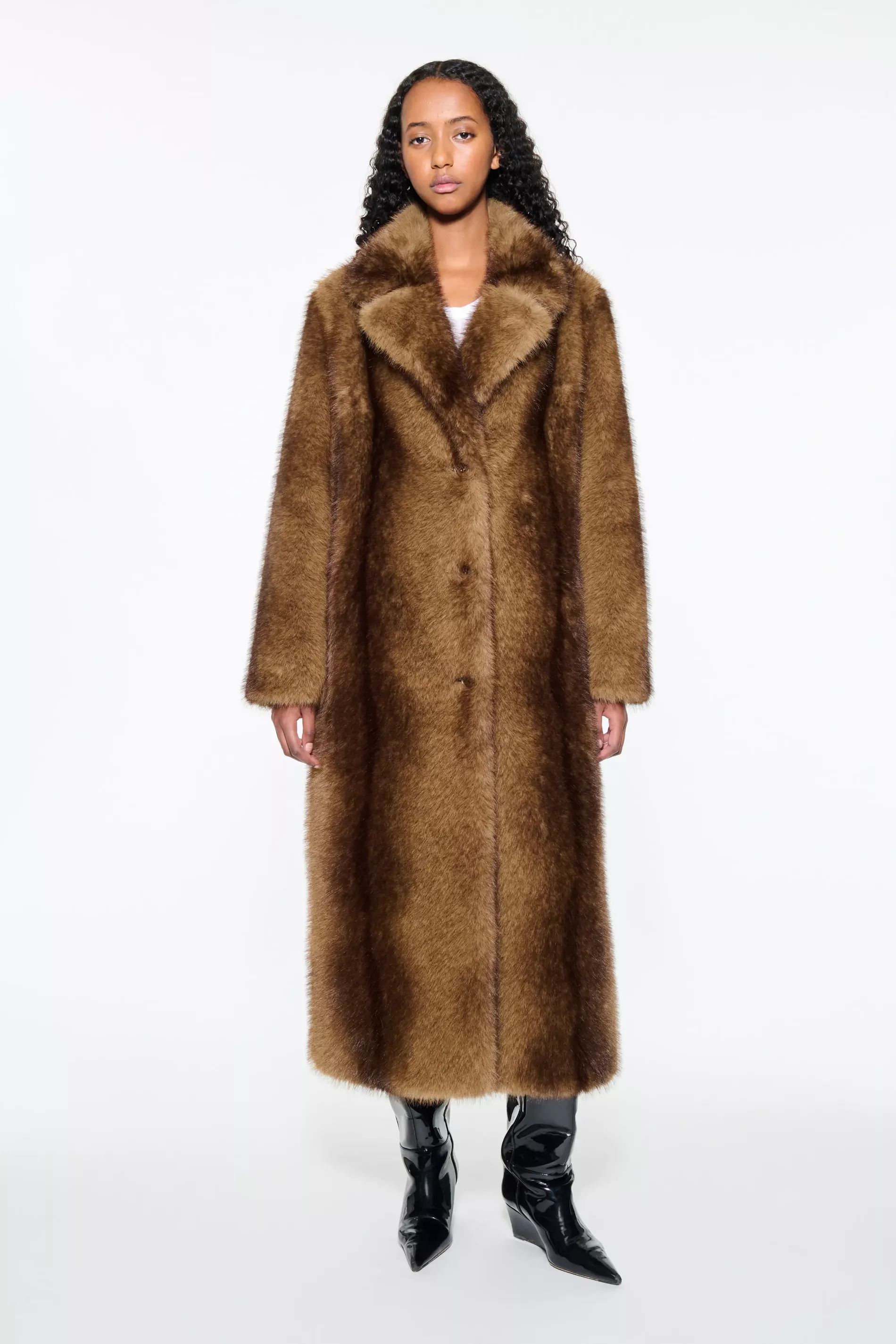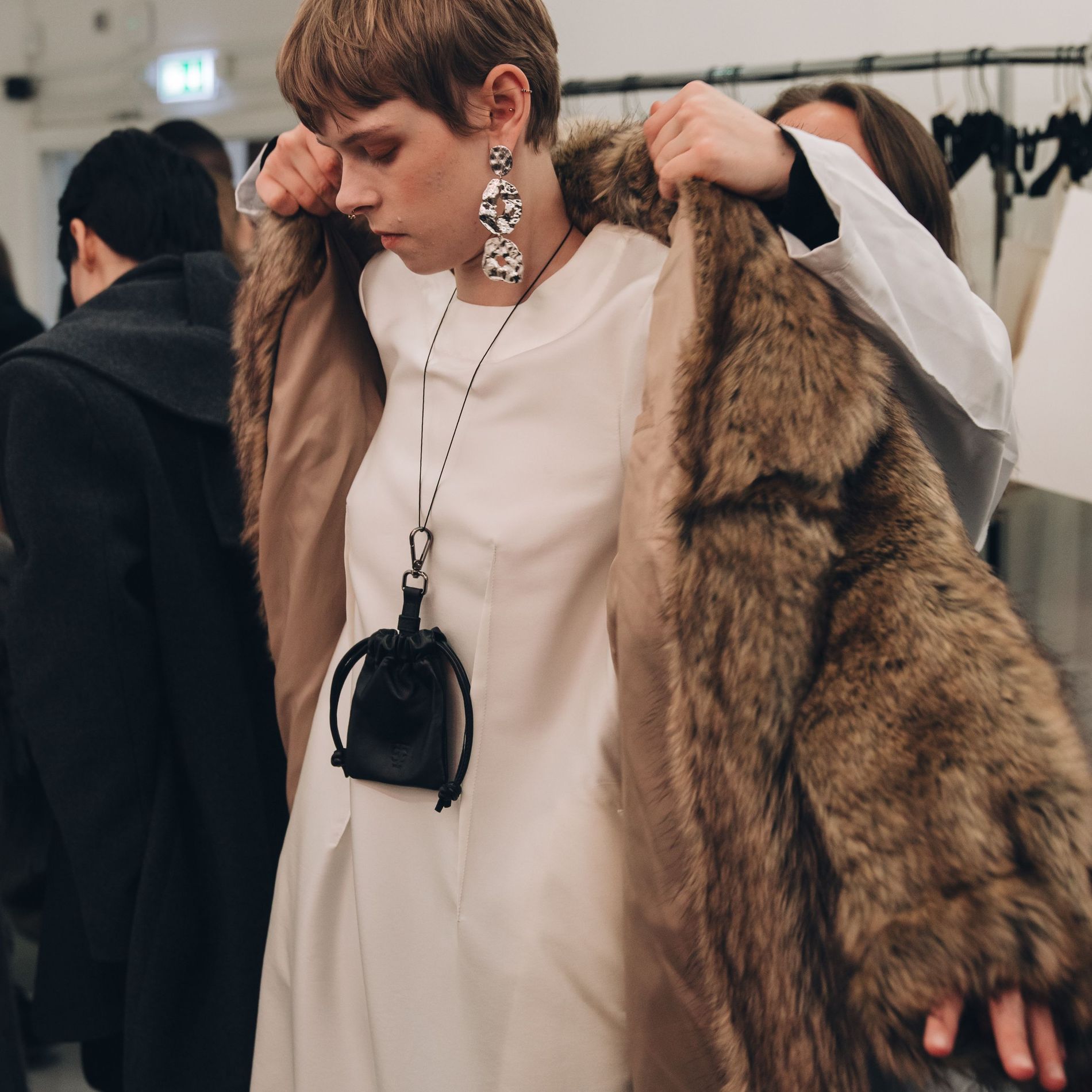Squint and you might think that the faux fur coats dominating Copenhagen Fashion Week's AW25 runways were the real deal. We delve into fashion's growing obsession with real-passing faux fur
Faux fur has entered the uncanny valley. For autumn/winter '25, faux fur coats – and there have been plenty – have been looking more and more like the real deal. Eerily realistic, in fact. Gone (mostly) are the cheeky, candy-coloured fuzzy toppers of season’s past – the sort of outerwear that embraces its synthetic nature. In its place, we find natural hues of brown and beige, not to mention texture, sheen and movement that feels increasingly more, well, animal-like. What gives?
At CPHFW, realistic faux fur was everywhere. Both Herskind and The Garment sent ladylike overcoats in natural browns down the runway, the latter of which, with its dip-dyed treatment and luxe silk lining was particularly convincing (it also came in a short jacket, worn off the shoulder for Kate Moss-like rock n’ roll appeal). Over at Munthe, smart brown faux minks and a faux leopard print painstakingly crafted to resemble the hide of an animal one might encounter on safari (the fluffiness of this outwear, too, is notable). Finally, at Rotate, a brand that oft-embraces fun and unabashed playfulness also opted for natural shades for its stoles, coats and trims.

Rotate autumn/winter 2025.

The Garment autumn/winter 2025.

Herskind autumn/winter 2025.
At a time when the debate surrounding vintage furs – namely, whether or not we should be allowed to wear them – has been reignited, the trend towards natural-looking faux fur is notable. After all, to wear a passable fake without repercussion implies that we’re moving further towards a space in which vintage or upcycled real fur is socially acceptable. In fact, upcycled fur also popped up on the Copenhagen runways, appearing in the Alectra Rothschild / Masculina show. When I spoke to Rothschild about the collection back in January, she said, simply, “I don’t agree with not using old fur coats – they’re there. Instead of making new faux fur, you might as well use used and upcycled fur that’s already here.”
I don’t agree with not using old fur coats – they’re there. Instead of making new faux fur, you might as well use used and upcycled fur that’s already here.
Alectra Rothschild

Backstage at Herskind autumn/winter 2025.

Backstage at Nicklas Skovgaard autumn/winter 2025. Photo: Bryndis Thorsteinsdottir

Backstage at Herskind autumn/winter 2025. Photo: Bryndis Thorsteinsdottir
At Munthe, however, there’s a hard-and-fast rule against real fur, upcycled or otherwise. “That doesn’t diminish my fascination, though, and it’s exciting to see how much faux fur has evolved – it now closely resembles real fur,” notes creative director Naja Munthe. Though Munthe has steered towards “abstract or unconventional” furs in the past, for AW25, she embraced a more realistic option primarily because it aligned with the concept of the overall collection. “The inspiration for this collection is rooted in the 1970s university style, a time when faux fur was not widely available and real fur was commonly worn,” say Munthe, noting that the goal was to make the faux fur look “as realistic as possible”. “That’s why I aimed to create something that closely mirrors the aesthetic of that era.”
At Rotate, meanwhile, the use of realistic-looking faux fur came down to the desire to make something luxurious at an accessible price point – a very Rotate idea if there ever was one. “Rotate has always been about making luxury accessible. So it just made sense to create statement coats that feel high-end without the impossible price tag,” note creative directors Jeanette Madsen and Thora Valdimars, who could be seen wearing the straight-from-the-runway outwear on the streets of Copenhagen throughout the week. “Something bold, beautiful, and made to last, without using real fur.” It took some trial and error to land on the final product, one that’s “fluffy, dense, and dramatic enough to rival real fur”. As with Munthe, Madsen and Valdimars reveal that the goal was, in fact, to get as close to real fur as possible.

Munthe autumn/winter 2025.

Stand Studio autumn/winter 2025. Photo: Stand Studio

Alectra Rothschild / Masculina autumn/winter 2025.
The go-to brand for faux fur in Scandinavia, Stand Studio, has been leaning towards more natural-looking outwear for several seasons now. Founder and creative director Nellie Kamras notes the the demand for these real-passing fuzzy fakes (which are crafted from a convincing polyester, complete with variations in colour and a fluffy finish) has been steadily increasing. “The natural-looking faux fur has become a wardrobe staple,” she says. “It completes every look.”
Kamras notes that the trend is due in part to developments in faux fur. “The development of faux fur has become so strong so today we can offer faux fur where you cant tell wether it’s real or faux,” she says. When Stand Studio started out with their signature coats and jackets, faux fur simply didn’t look and feel as good and even natural-hued furry outwear looked, well, fake. Perhaps that explained the desire to lean further into vibrant hues – if it’s going to look faux anyway, it might as well look really faux. Still, she says there remains a customer who opt for the unnatural, simply because of the signal a real-looking fur sends to others. “Some customers don’t feel comfortable wearing faux fur that looks like real,” she says. “They are scared that it will be mistaken for real.”
